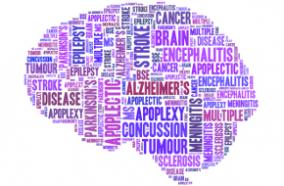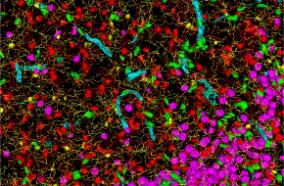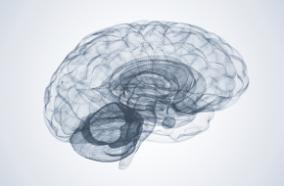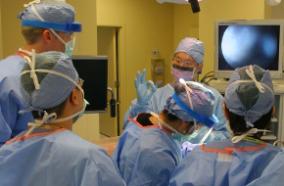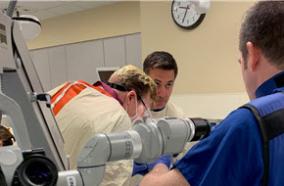4 years 4 months ago
Outcomes associated with buprenorphine therapy for the treatment of opioid use disorder (OUD) are suboptimal. reSET-O is an FDA-authorized prescription digital therapeutic (PDT) delivering neurobehavioral therapy via mobile devices to patients with OUD treated with buprenorphine. This analysis evaluated the net impact of reSET-O on medical costs among actively-engaged reSET-O patients using real-world observations. This real-world retrospective analysis of health care claims between October 2018...
Fulton F Velez
4 years 4 months ago
CONCLUSIONS AND RELEVANCE: In this study, pathological CT features carried different prognostic implications after mTBI to 1 year postinjury. Some patterns of injury were associated with worse outcomes than others. These results support that patients with mTBI and these CT features need TBI-specific education and systematic follow-up.
Esther L Yuh
4 years 4 months ago
PURPOSE OF REVIEW: This review summarizes the unique presentation and management of the leukemic variant of mantle cell lymphoma (LV-MCL, also referred to as non-nodal MCL) and highlights the biologic and clinical differentiation from classical mantle cell lymphoma (cMCL) in biomarker expression, clinical features, prognosis, disease course, and treatment.
Krista M Isaac
4 years 4 months ago
Cyclic GMP-AMP synthase (cGAS) is a cytosolic DNA sensor that produces the second messenger cG[2'-5']pA[3'-5']p (2'3'-cGAMP) and controls activation of innate immunity in mammalian cells^(1-5). Animal genomes typically encode multiple proteins with predicted homology to cGAS^(6-10), but the function of these uncharacterized enzymes is unknown. Here we show that cGAS-like receptors (cGLRs) are innate immune sensors that are capable of recognizing divergent molecular patterns and catalysing...
Kailey M Slavik
4 years 4 months ago
Influenza viruses cause approximately half a million deaths every year worldwide. Vaccines are available but partially effective, and the number of antiviral medications is limited. Thus, it is crucial to develop therapeutic strategies to counteract this major pathogen. Influenza viruses enter the host cell via their hemagglutinin (HA) proteins. The HA subtypes of influenza A virus are phylogenetically classified into groups 1 and 2. Here, we identified an inhibitor of the HA protein, a tertiary...
Kris White
4 years 4 months ago
Developmental neurotoxicity (DNT) studies could benefit from revisions to study design, data analysis, and some behavioral test methods to enhance reproducibility. The Environmental Protection Agency (EPA) reviewed 69 studies submitted to the Office of Pesticide Programs. Two of the behavioral tests identified the lowest observable adverse effect level (LOAEL) 20 and 13 times, respectively, while the other two tests identified the LOAEL only 3 and 4 times, respectively. The EPA review showed...
Charles V Vorhees
4 years 4 months ago
CONCLUSIONS: A user-centered implementation of treatment apps for DUDs in primary care will require health systems to design workflows that account for patients' needs for structure, support in and outside of visits, and desire for convenience.
Joseph E Glass
4 years 4 months ago
CONCLUSIONS: There is clustering of subpatent infections around RDT(+) individual(s) when both imported and local infection are suspected. Future control strategies that aim to treat whole households in which an RDT(+) individual is found may target a substantial portion of infections that would otherwise not be detected.
Dianna E B Hergott
4 years 5 months ago
CONCLUSION: We found studies that provide new evidence supporting the cost-effectiveness of buprenorphine compared with no pharmacotherapy. We found a lack of evidence supporting superior economic value for buprenorphine versus methadone, suggesting that both are attractive alternatives. Further economic research is needed on XR-NTX, as well as other emerging pharmacotherapies, treatment modalities, and dosage forms.
Erica N Onuoha
4 years 5 months ago
CONCLUSIONS: False-positive catheter laboratory activations for suspected STEMI patients are low across New Zealand. The differences in the proportion of non-ACS diagnoses according to DHB interventional capability for other suspected ACS requires further investigation.
Charles Yao-Cheng Ho
4 years 5 months ago
CONCLUSIONS: NC is one of the most widely utilized neurosurgical social media resources available. Sharing knowledge has been broadened thanks to the recent social media evolution, and NC has become a leading player in disseminating neurosurgical knowledge.
Bipin Chaurasia
4 years 5 months ago
CONCLUSION: Stent-retrievers and a combined approach for M2 occlusions seem more effective than direct aspiration, but with higher rates of iSAH. This leads to no detectable difference in clinical outcome at 3 months.
Leonardo Renieri
4 years 5 months ago
CONCLUSIONS AND RELEVANCE: In this study, patients with msTBI frequently demonstrated major functional gains, including recovery of independence, between 2 weeks and 12 months postinjury. Severe impairment in the short term did not portend poor outcomes in a substantial minority of patients with msTBI. When discussing prognosis during the first 2 weeks after injury, clinicians should be particularly cautious about making early, definitive prognostic statements suggesting poor outcomes and...
Michael A McCrea
4 years 5 months ago
Measurement of intracranial pressure (ICP) during cerebrospinal fluid (CSF) drainage with an external ventricular drain (EVD) typically requires stopping the flow during measurement. However, there may be benefits to simultaneous ICP measurement and CSF drainage. Several studies have evaluated whether accurate ICP measurements can be obtained while the EVD is open. They report differing outcomes when it comes to error, and hypothesize several sources of error. This study presents an...
Peter G Beidler
4 years 5 months ago
Multidrug resistance proteins (MRPs), members of the ATP-binding cassette transporter (ABC transporter) family, are pivotal for transporting endo- and xenobiotics, which confer resistance to anticancer agents and contribute to the clearance of oxidative products. However, their function in many biological processes is still unclear. We investigated the role of an evolutionarily conserved MRP in metabolic homeostasis by knocking down the expression of Drosophila multidrug-resistance like protein...
Wen Liu
4 years 5 months ago
Brain tumors are among the most lethal tumors. Glioblastoma, the most frequent primary brain tumor in adults, has a median survival time of approximately 15 months after diagnosis or a five-year survival rate of 10%; the recurrence rate is nearly 90%. Unfortunately, this prognosis has not improved for several decades. The lack of progress in the treatment of brain tumors has been attributed to their high rate of primary therapy resistance. Challenges such as pronounced inter-patient variability,...
James H Park
4 years 5 months ago
Large-scale human exome sequencing can identify rare protein-coding variants with a large impact on complex traits such as body adiposity. We sequenced the exomes of 645,626 individuals from the United Kingdom, the United States, and Mexico and estimated associations of rare coding variants with body mass index (BMI). We identified 16 genes with an exome-wide significant association with BMI, including those encoding five brain-expressed G protein-coupled receptors (CALCR, MC4R, GIPR, GPR151,...
Parsa Akbari
4 years 5 months ago
The global decline in malaria has stalled¹, emphasizing the need for vaccines that induce durable sterilizing immunity. Here we optimized regimens for chemoprophylaxis vaccination (CVac), for which aseptic, purified, cryopreserved, infectious Plasmodium falciparum sporozoites (PfSPZ) were inoculated under prophylactic cover with pyrimethamine (PYR) (Sanaria PfSPZ-CVac(PYR)) or chloroquine (CQ) (PfSPZ-CVac(CQ))-which kill liver-stage and blood-stage parasites, respectively-and we assessed vaccine...
Agnes Mwakingwe-Omari
4 years 5 months ago
Although frequently prescribed, certain antibiotics such as trimethoprim-sulfamethoxazole carry the risk of a rare yet life-threatening adverse effect, termed drug-induced aseptic meningitis. Morbidity can be avoided if the medication is identified and discontinued. Patients in reported cases tend to be female and have an autoimmune disease or prior adverse reaction to the offending agent. As a rare and poorly characterized condition, the subset of patients using antibiotics at risk for aseptic...
Andrew Wai Kei Ko
4 years 5 months ago
Noncanonical poly(A) polymerases PAPD5 and PAPD7 (PAPD5/7) stabilize hepatitis B virus (HBV) RNA via the interaction with the viral posttranscriptional regulatory element (PRE), representing new antiviral targets to control HBV RNA metabolism, hepatitis B surface antigen (HBsAg) production, and viral replication. Inhibitors targeting these proteins are being developed as antiviral therapies; therefore, it is important to understand how PAPD5/7 coordinate to stabilize HBV RNA. Here, we utilized a...
Fei Liu
"university of washington"[affiliation] and neurological surge...: Latest results from PubMed
More posts about UW Neurological Surgery Recent PubMed Publications



